No other country in the world offers an opportunity to relive ancient times like the castles of Albania. Albania was part of some of the most powerful empires in history and witnessed epic battles where the stories of heroes and legends are still shared to this day.
Suppose you’re looking for a hospitable country that is budget-friendly and allows you to walk in the same footsteps as Ottoman soldiers and Roman gladiators. In that case, you need to visit these castles of Albania.
Here are some of the most well-known castles scattered throughout Albania and what adventures await you when you visit!
Berat Castle

The city of Berat is more than 2,400 years old and is a UNESCO world heritage site nestled along the rocky banks of the Osum River. Berat Castle overlooks the town and was rebuilt and overtaken throughout the decades. While it never fully recovered from the centuries of damage, this castle is still a magnificent sight.
You will be pleasantly surprised once you step behind the fortress walls to find more than 20 churches, primarily built in the 13th century, along with a mosque. When Albania was under communist rule, the dictator had many places of worship destroyed. Having so many churches and the mosque still preserved behind the walls of Berat Castle is an absolute marvel.
You’ll also be astonished to see people still living in the stone houses behind the fortress walls. You can enter the castle by walking up the cobblestone road from downtown Berat. There is also an afternoon bus you can grab with the residents of this magnificent city.
Rozafa Castle
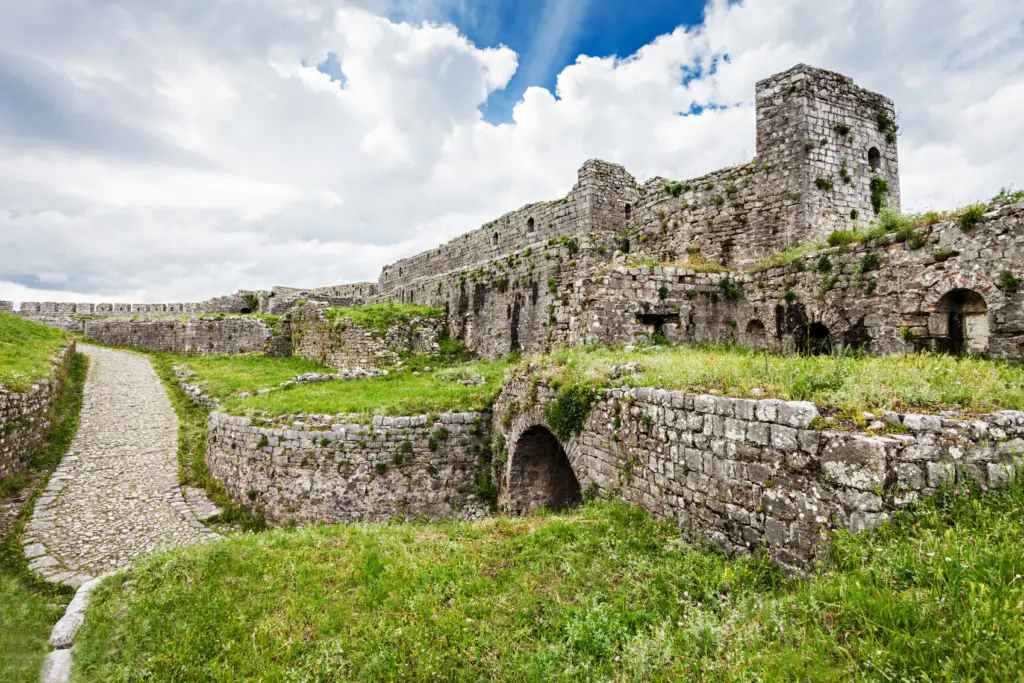
Rozafa Castle is also known as Shkodra Castle, named after the city where it is located. Shkodra is one of the oldest cities in Albania, having been occupied by the Roman Empire, the Serbians, the Venetians, and the Ottomans.
Rozafa Castle is one of the most popular castles visited each year because of its legendary story. According to legend, Rozafa, the youngest wife of the three brothers trying to build the walls of the castle, had to be sacrificed and buried in the walls so they would not keep falling during construction.
When you enter the castle, you will see a life-size sculpture of Rozafa, half-buried in the wall. She did not protest about being buried in the wall. However, all she asked was to have half her body exposed so she could still comfort her infant son.
Why did the brothers pick the youngest of the wives to get sacrificed? The legend is also a lesson in “besa,” which is the Albanian word for “keeping the word.” You’ll have to visit Rozafa Castle to learn more!
Lezhe Castle
Lezhe Castle is located in Lezha and is another castle that is connected to Illyrian times. Illyrians built the castle. The earliest record of Illyrians dates back to the sixth century B.C.
You’ll find Lezhe Castle on top of the highest hill in the city. The Venetians and Ottomans also conquered this castle, reconstructing the fortress with each occupation. A mosque sits inside the castle, along with towers over the southern and southeastern walls. These provide jaw-dropping views of the crystal blue waters of the Adriatic Sea, the lush Lezhe fields, and the majestic Albanian mountains.
Lezhe Castle is a history lesson with unforgettable views!
Kruje Castle
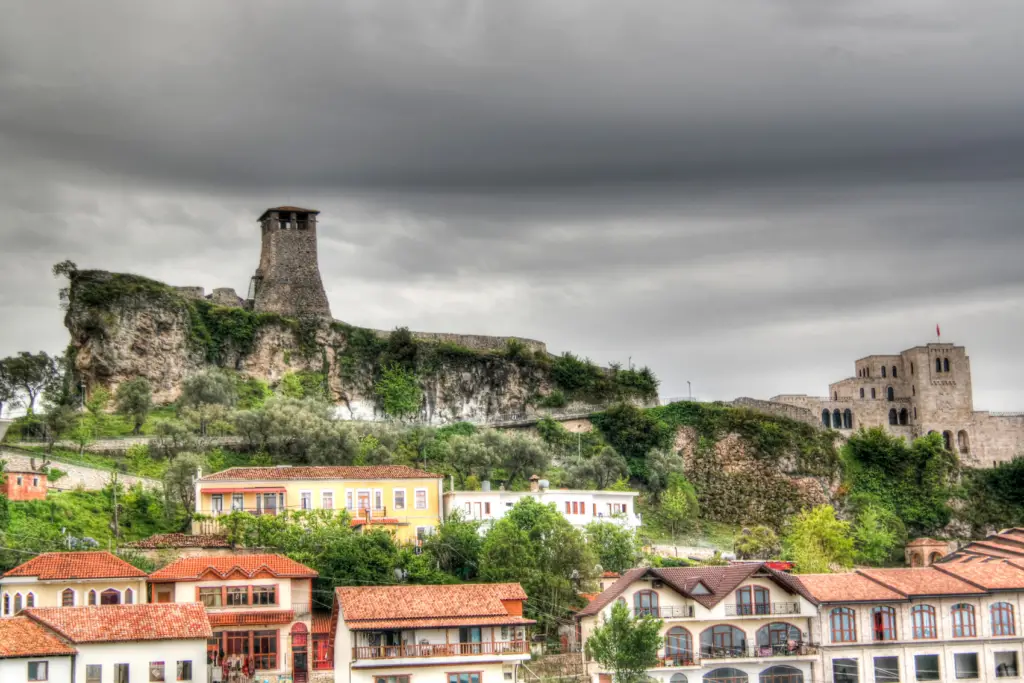
Kruje Castle is the place most known for Albania’s national hero, Skanderbeg. Kidnapped in Albania when he was a child and raised in the Ottoman court, he fled the Empire to return to his homeland. He became the ruler of Kruje and eventually reunited all of Albania under his leadership.
While eventually Albania would be occupied by the Ottoman Empire, they held off occupation for nearly 25 years under Skanderbeg’s leadership. The most significant of battles against the Ottomans happened at Kruje Castle.
Massive walls with nine towers surround it, the highest tower serving as a way to signal nearby towns of Durres and Petrela of any invasions. Skanderbeg was able to hold off the Ottomans in significant battles in 1450, 1466, and 1467. Only when Skanderbeg died were the Ottomans able to conquer Kruje Castle and the rest of the country.
Inside there is a museum dedicated to Skanderbeg, where you can even see the very desk and chair, he used to write his military orders. The castle is about an hour drive from the capital city of Tirana. This is one castle you have to experience.
Lekuresi Castle
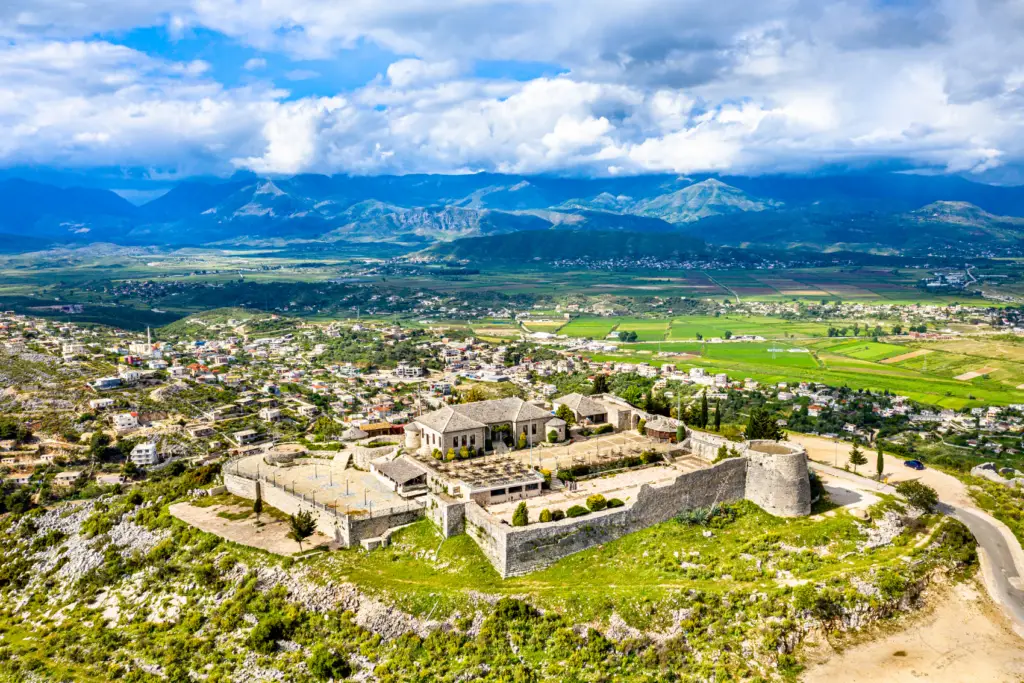
Lekuresi Castle overlooks the southern beach city of Saranda. Positioned on top of the highest nearby hill, you can overlook the city, the sea, and even spot the nearby Greek island of Corfu.
Sultan Sleiman the Magnificent built Lekuresi Castle after he had attacked Corfu and needed a way to keep control of Saranda and the vital road that connected it to the nearby city of Butrint.
While most people visit Saranda for a beach getaway, Lekuresi Castle is a must-see for the incredible sunset views and a relaxing coffee at the restaurant that now sits inside the castle.
Petrela Castle
Petrela Castle is another historic gemstone just a short drive from the capital city of Tirana. Nestled on top of a rocky hill more than 1,000 feet above sea level, this castle was built in a triangle shape with two observation towers. It would communicate with Kruje Castle by fire signals during invasions.
Skanderbeg’s sister, Mamica Kastrioti, actually commanded Petrela Castle and fought off the Ottomans for many years by signaling each other. Today, you can enjoy coffee and local food at the restaurant inside the castle and enjoy the beautiful views of olive groves and mountains in the Erzen valley.
Preza Castle
This is a castle you can walk to after landing at the Mother Theresa International Airport. Built by an Illyrian Roman Emperor in the 550s, this was also another important location where Skanderbeg, the national hero of Albania, fought off Ottoman invasion.
The castle has a tower in each of the four corners, with a clock tower where you can overlook the outskirts of Tirana. Enjoy a coffee at the nearby restaurant before you head back to the airport!
Durres Castle
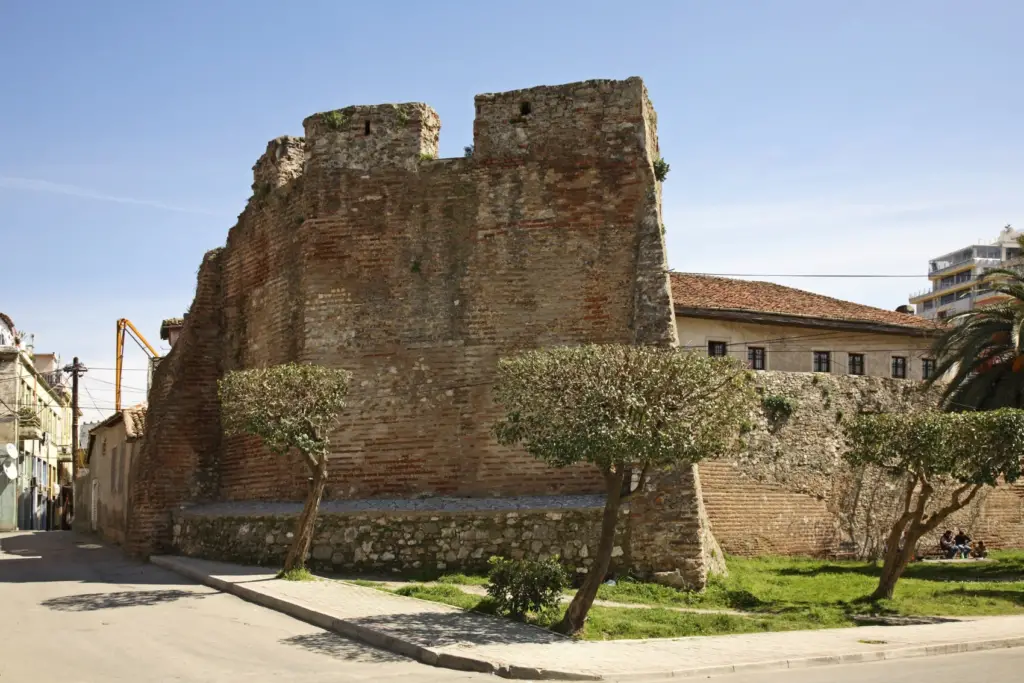
At its prime, the city of Durres was one of the most impenetrable cities along the Adriatic Sea thanks to being protected by the walls of Durres Castle. Built by a Byzantine Emperor in the late fifth century, the walls stand nearly 15 feet tall, with many guards towers added during the occupations of Venetians and Ottomans.
The latest combat that happened at Durres Castle was in 1939. With only 360 Albanians armed with three machine guns behind the walls, they were able to delay Italian forces for several hours during what is known in history as the Italian invasion of Albania.
Today it is a popular tourist attraction, Durres only being a short 30-minute drive from the capital city of Tirana.
Rodon Castle
Located in Rodon Bay, about an hour and a half drive from Tirana, the Castle of Rodon is the result of Skanderbeg’s strategy to defend the country against the Ottomans. Completed in 1452, it was more than 1,300 feet along, nestled along the waters of the bay.
Today, most of the walls are now underwater due to the crashing of nearby sea waves. But visitors can still marvel at some of the surviving walls and towers that survived centuries later.
Bashtova Castle
If you are in the city of Durres, Bashtova Castle is only about a 40-minute drive in the village of Bashtova. On the tentative list of UNESCO World Heritage Sites, it is truly unique because of its strategic location during the Roman Empire and the only castle in the Balkan region to be built in a field.
Built in the 15th century, it is a rectangular shape. Historians believe it was a two-story castle and at one point had a total of seven towers, but today you can see the remaining first level and the three surviving towers. When you visit, you may even catch the Bashtova Festival, an annual celebration of culture and heritage that always takes place at Bashtova Castle.
Elbasan Castle

Just a short drive from Tirana, the city of Elbasan is home to Elbasan Castle, a 2,000 year-old testament to the Roman and Ottoman Empires. Built by a Roman Emperor during its prime, it circled the entire city. You could find more than 900 shops selling leather, silk, metals, and silver during the Ottoman occupation.
Today you can still see much of the castle’s walls around the city, along with eight surviving towers. Also, behind the walls, you can see a mix of Christian and Muslim influences, including a traditional Turkish bath.
Gjirokastra Castle

Located in the southern region of Albania, Gjirokastra Castle is about an hour drive away from the beach city of Saranda. Sitting on top of a hill, this castle overlooks the town, with its clock tower dominating the grassy, mountainous landscape. The first record of the castle’s occupation dates back to the fourth century, but today reflects construction mostly of the 19th century.
There is a legend of Argyro, a princess who jumped over the castle walls with her son to escape from Turkish soldiers during the Ottoman invasion. You can learn more about this legend, as well as walk through a museum of Albania’s resistance against German occupation.
You’ll also see a U.S. Air Force jet, still surrounded by mystery to this day. Some say it was a spy jet shot down by Albanian forces during the Cold War, others say it suffered mechanical problems. The pilot returned home, but the jet remains at Gjirokastra Castle today.
Ali Pasha Castle in Tepelena
Another must-see castle located in the southern region of Albania is Ali Pasha Castle in Tepelena. Venetians originally built the castle but became a prime location for the Ottomans and was the second home to Ali Pasha Tepelena.
Ali Pasha was an Ottoman Albanian ruler known for his harshness in enforcing law and order. He quickly rose in the ranks of the Ottoman Empire but finally had a falling out in 1820 and was killed two years later. Though he was harsh, the people respected him greatly. You can see a statue of this infamous leader before entering the castle.
Kanine Castle
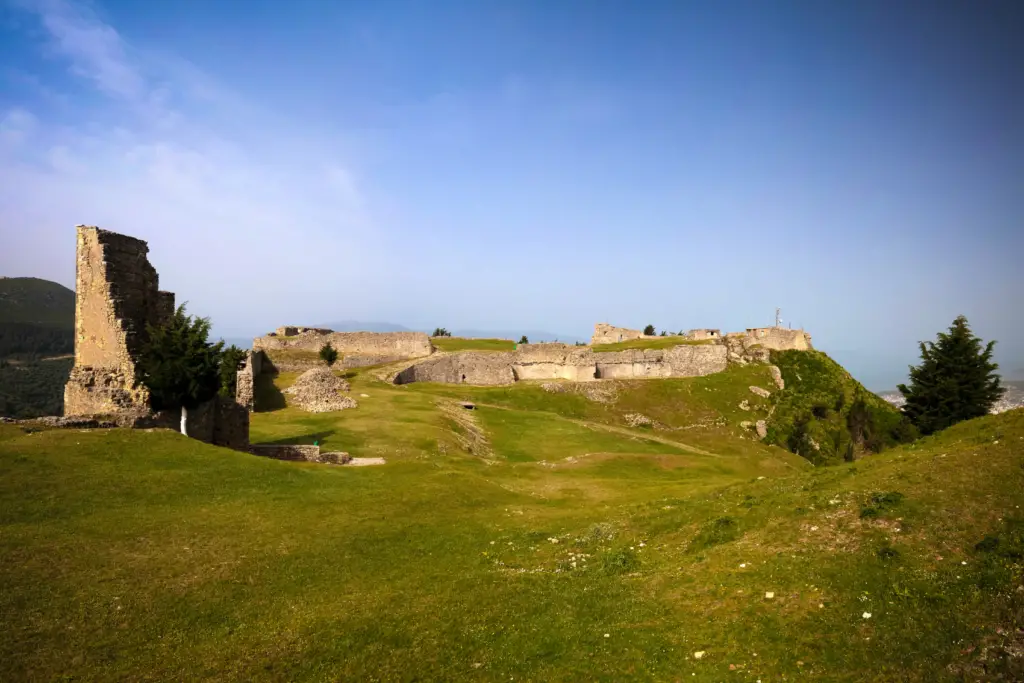
Located just outside the city of Vlore is Kanine Castle, with origins that date back to the third century B.C., making it one of the oldest-known settlements in the region. Nestled on a hilltop next to the Shushica Mountain, you can still see the influences of the Byzantine, Venetian, and Ottoman empires.
The most historical significance of this castle is that it was the fortress of Gjergi Arianiti, a formidable Albanian lord and ally of Skanderbeg, who led several successful battles against the Ottomans. An important representation of Albanian resistance and pride makes this castle one of the most popular tourist attractions in the region.
Ali Pasha Castle in Porto Palermo
In 2014, the Huffington Post called Porto Palermo the top undiscovered European destination because you will find beautiful landscapes, turquoise waters, and Ali Pasha Castle.
It’s a small castle but massive in significance. Many believe Ali Pasha, known for his harsh rule, built the castle to honor his wife, Vasiliqise. But some historians believe it was built by Venetians due to the triangular-shaped towers, a design the Venetians also used in other Albanian cities.
Throughout the decades, it was home to several military actions through World War II. For a short period, it was used as a prison but now welcomes visitors from all over the world.
Himare Castle
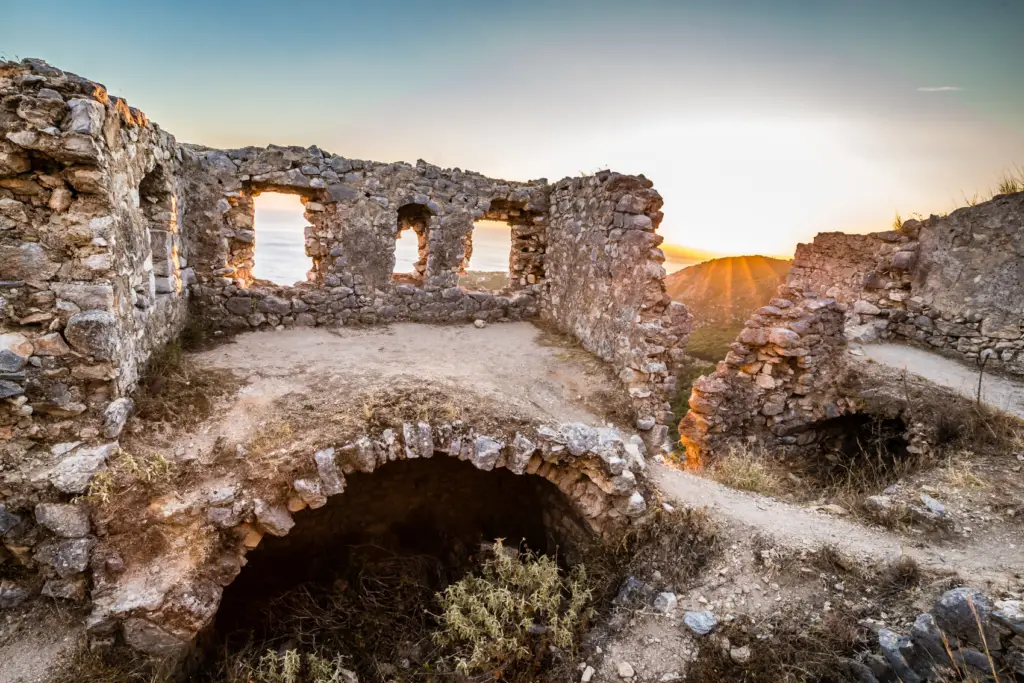
You can find this 2,000-year-old castle along the Ionian Coast in the old town of Himara, now one of the top summer destinations in Albania. On top of the tallest hill in the town, Himare Castle served as protection for the village below.
Historians believed the castle could have been built as early as the first century. The most significant constructions happened during the Byzantine Empire, around the sixth century. You can still see some of the historic residences inside the castle, along with churches from the era.
The most notable church is the Episcopal Church, which displays a sculpture of the two-headed eagle, the symbol of Albanian pride. This symbol dates back to the 14th century and is the same symbol used on the country’s flag today.
Borsh Castle
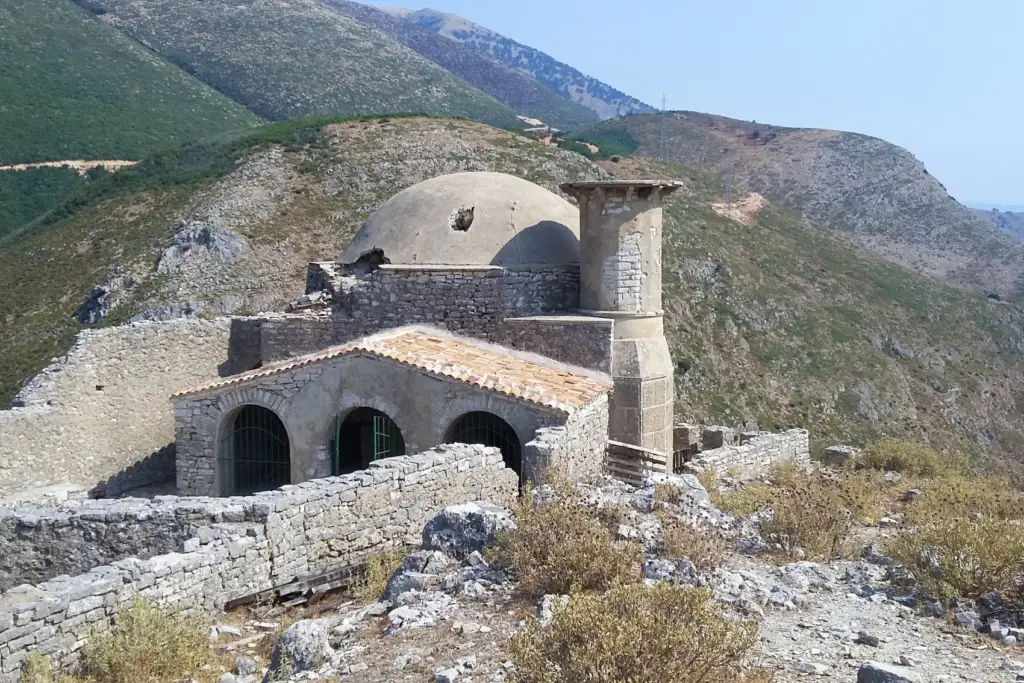
The village of Borsh is known for having the longest and most picturesque coastline. And when you climb up to Borsh Castle, the view will make you understand why it’s one of the must-see views along the Ionian Coast.
Built as a strategic location in the third century B.C., the castle’s fortified walls stand as tall as 32 feet. For the longest time, Borsh Castle was the gateway to the world and the sea from the Cerunian Mountains. Inside, you can find influences of all occupiers, from Byzantine to Romans to Ottomans. Also inside is the only mosque in the Albanian Riviera, built during the reign of Ali Pasha Tepelena.
Ali Pasha Vivari Castle
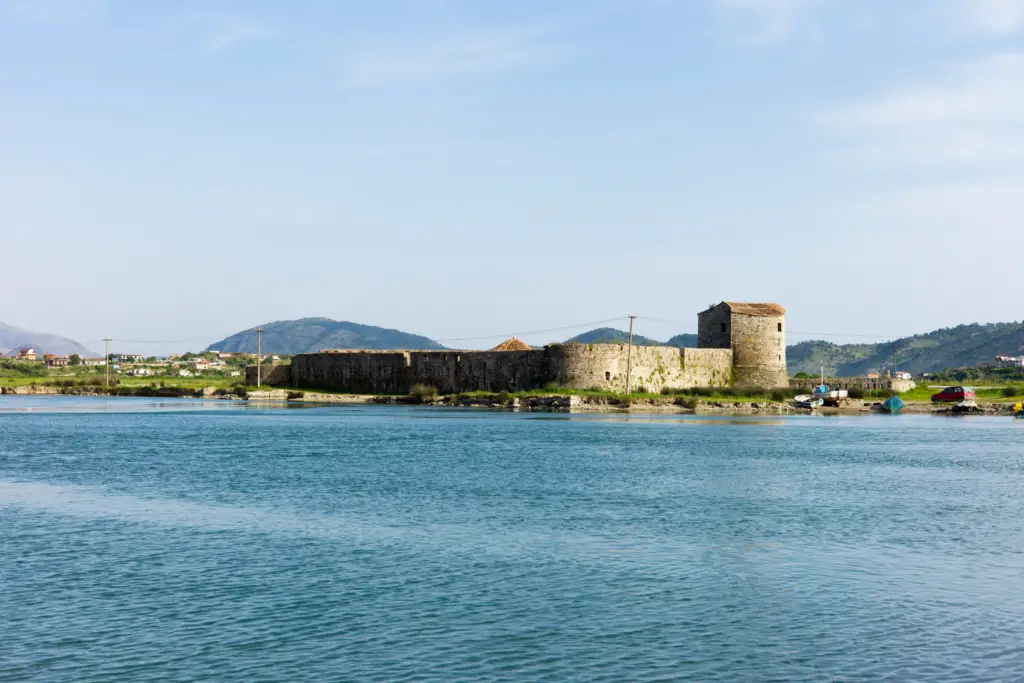
Ali Pasha Vivari Castle is located near Butrint, an ancient city, a UNESCO World Heritage Site. It is a triangle-shaped castle with rounded towers in each corner, dating back to the 13th century.
It has a Venetian touch but is named after its most famous occupier, Ali Pasha Tepelena. It is a small castle, but worth a visit, especially if you’re in the area visiting Butrint.
Tip:
If you prefer to visit with a tour, consider the following tours:
Castle – Berat Castle
Castles – Kruje and Rozafa
Castles – Elbasan and Petrel
Castles – Gjirokaster & Lekuresi
****
Our favorite castles are Berat Castle, Kruje Castle, and Elbasan Castle. The history speaks through the remains of each castle.
The trek to the castle can be equally as fascinating as the castle. The walk or drive to the top can be challenging to navigate at times depending on the castle. The imperfections add to the character of the place and the authenticity of the experience.
Plan plenty of time to explore, learn, and take photos. Bring water and snacks, and most of all, pay attention to the stories. Each story seems to have a hero or a clear lesson and some have both. Albanian culture is built on these stories, “besa,” and its history.
Recent Blog Posts
This post contains affiliate links. At no additional cost to you I may earn a commission if you make a purchase.

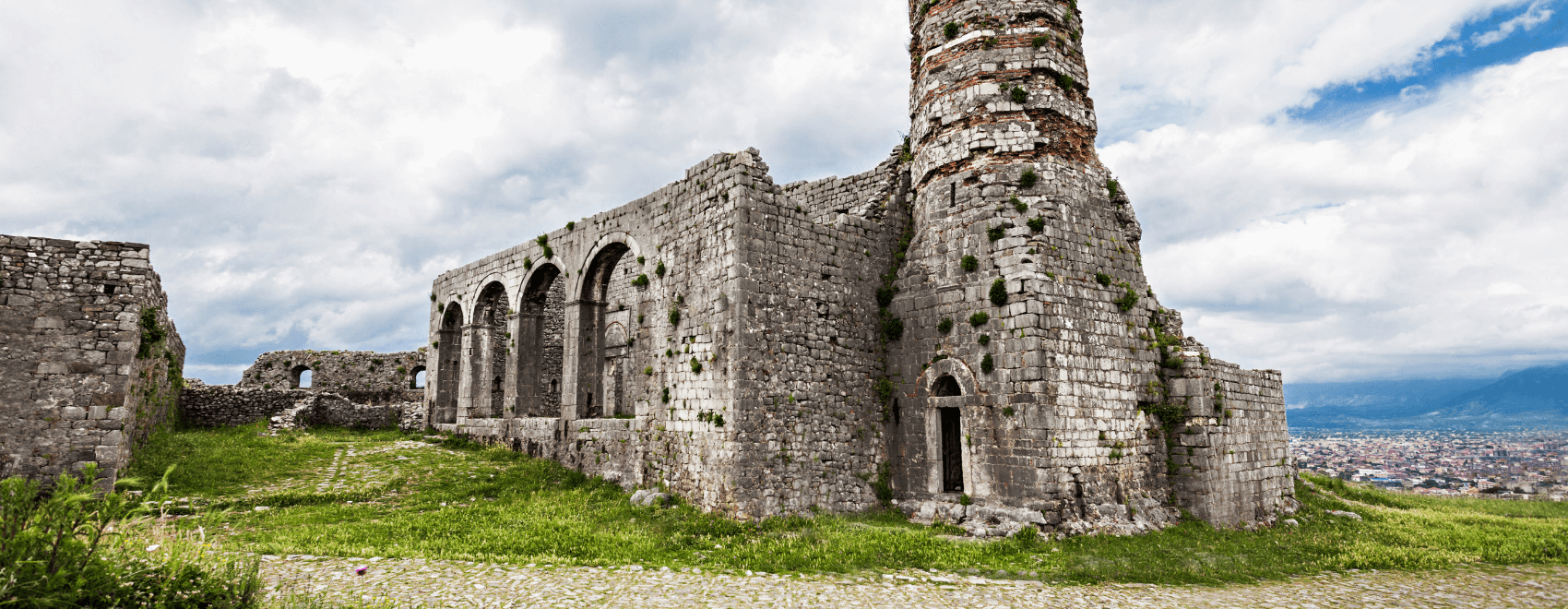
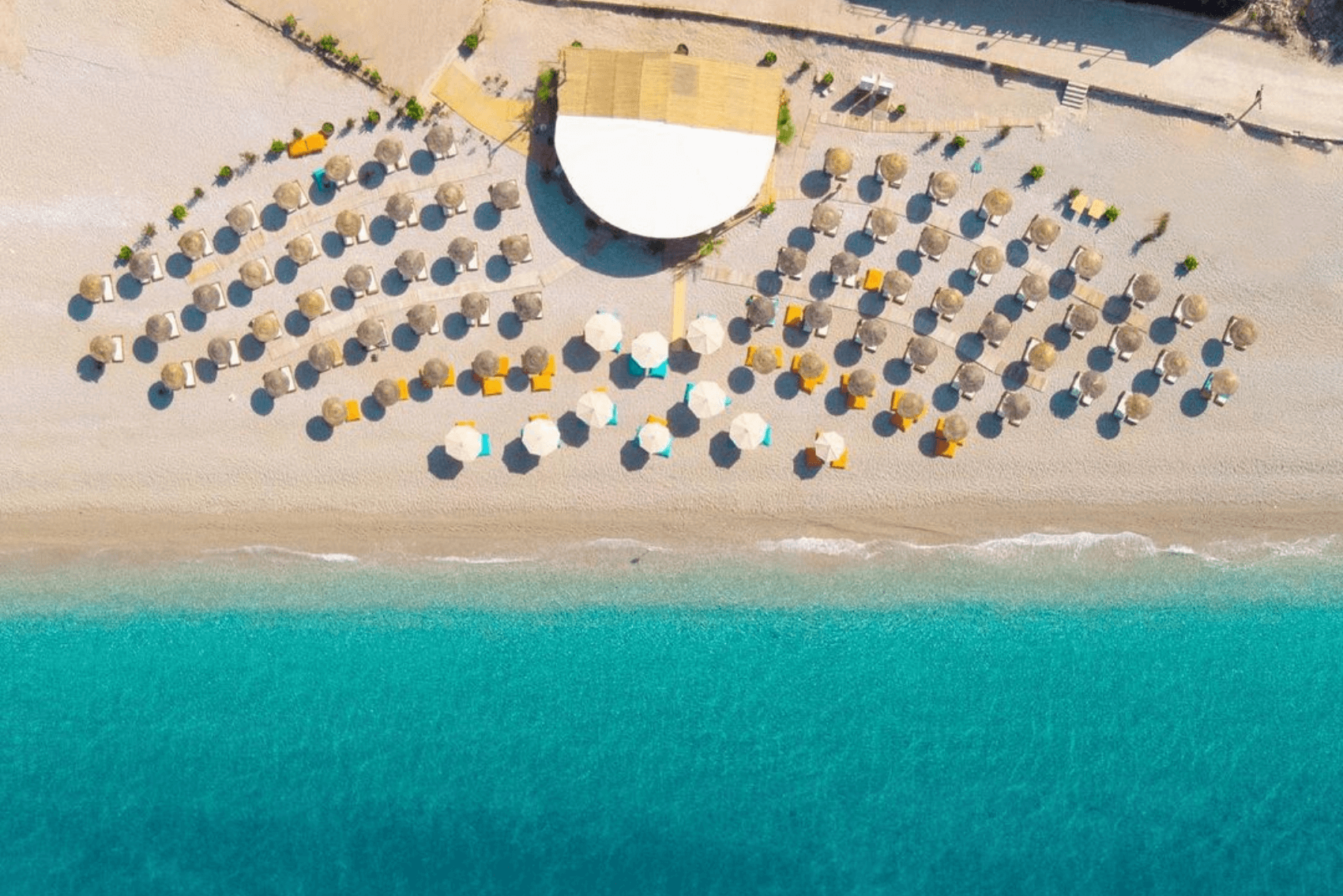
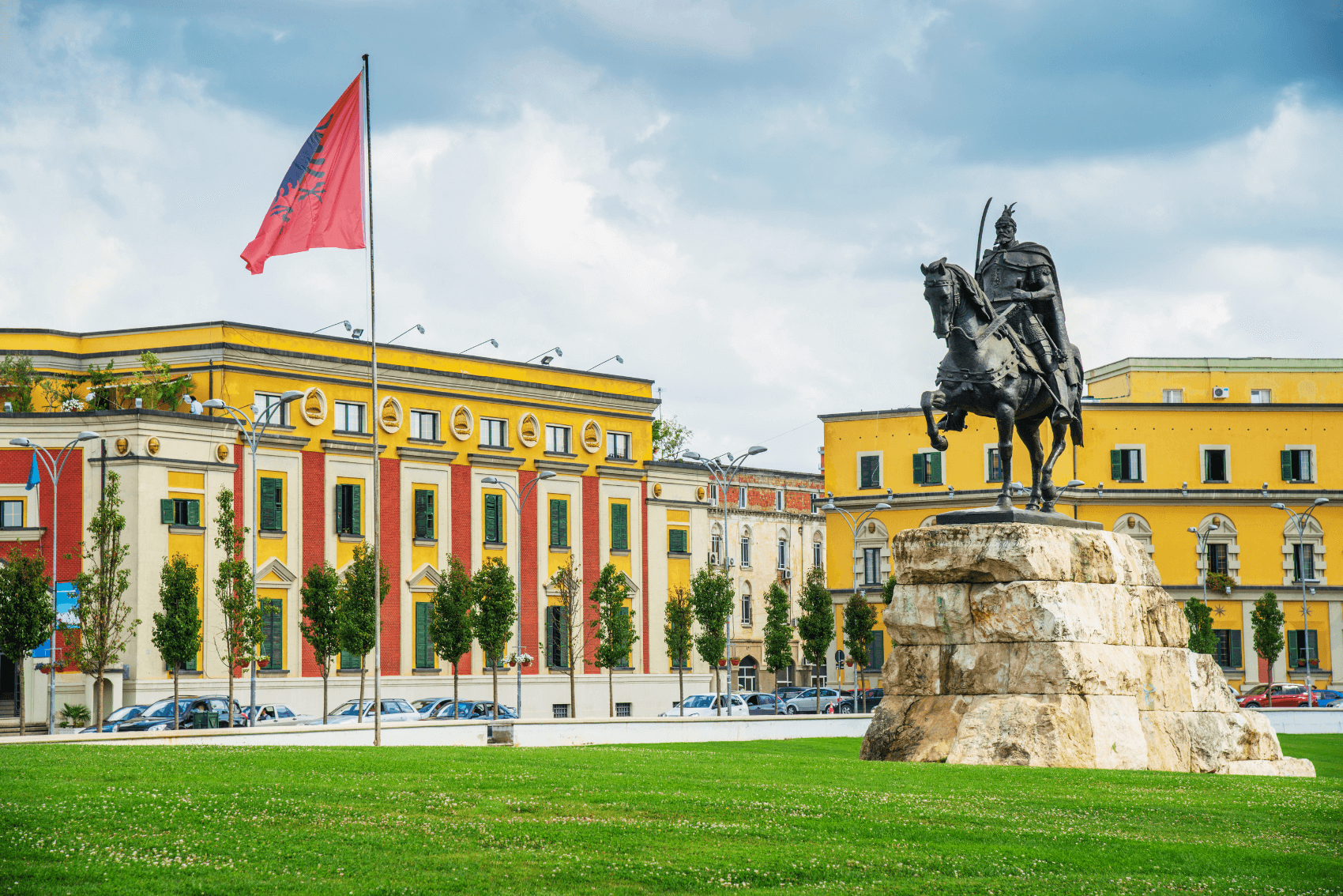
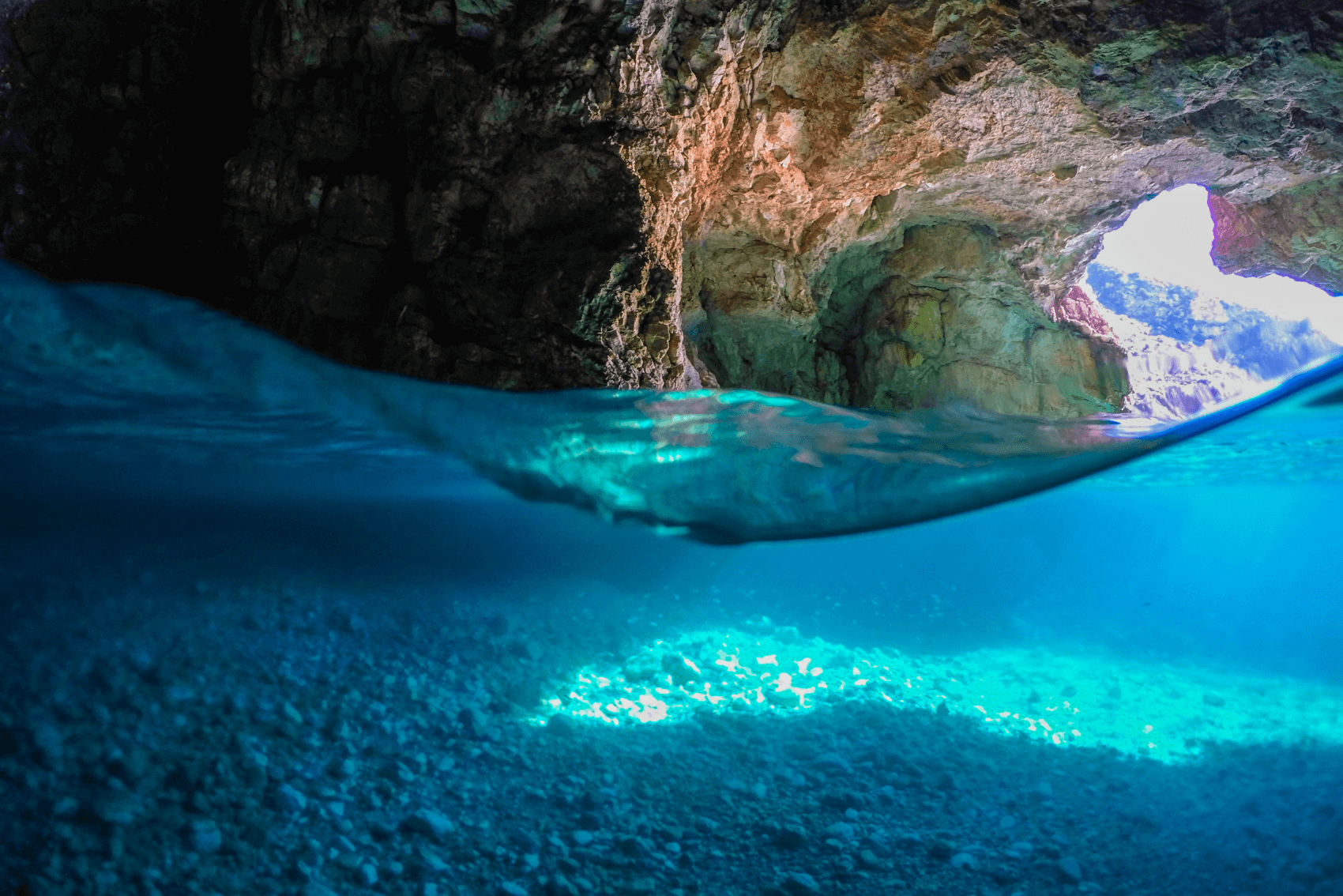
[…] For more information stay tuned for future post 10 Must See Museums In Albania and blog post: Relive History By Visiting These Ancient Castles Of Albania. […]